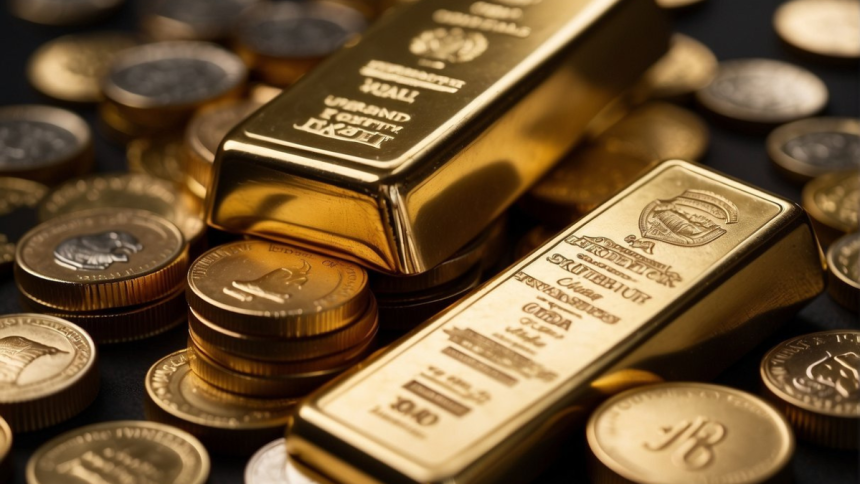Investors often face a choice between physical precious metals and paper assets tied to metals. Both approaches aim to provide diversification, but they carry very different qualities and risks. Many investors prefer physical metals because they offer direct ownership and a sense of security that paper assets cannot match.
This preference connects to broader goals such as wealth protection, stability, and control. By holding tangible assets, investors gain a clear way to balance their portfolios while reducing exposure to market uncertainty. As a result, physical metals continue to stand out as a trusted foundation for long-term strategies.
Tangible Asset Security: Physical metals provide direct ownership, reducing counterparty risk
Physical precious metals give investors direct control over their holdings. Coins and bars exist outside of financial institutions, so ownership does not depend on a third party. This reduces exposure to counterparty risk, which can affect paper assets like ETFs or certificates.
Unlike paper claims, physical gold and silver remain in the hands of the owner. Investors can store them privately or in secure facilities, which provides a clear sense of possession. This direct ownership can be appealing for those who want independence from market intermediaries.
Therefore, many investors view physical metals as a practical way to protect wealth during uncertain economic conditions. An experienced gold investment firm can guide individuals who want to add physical assets to their portfolio. Their role is to help investors understand storage options, liquidity needs, and long-term strategies.
As a result, holding physical metals can serve as a straightforward method of diversification while reducing reliance on financial systems. Investors gain both a tangible asset and greater control over their investment decisions.
Inflation Hedge: Physical gold and silver maintain value during currency devaluation
Investors often look to physical gold and silver during periods of rising inflation. These metals have a long history of holding their value even as paper currency loses purchasing power. This makes them useful for protecting wealth against the effects of devaluation.
Unlike paper assets, physical metals do not depend on central banks or governments. Their worth comes from scarcity and demand, not policy decisions. As a result, they tend to preserve value while fiat money weakens.
Gold and silver also act as a store of wealth across generations. People continue to view them as safe assets during economic stress. This perception strengthens their role as a hedge against inflation.
Therefore, many investors include physical metals in their portfolios to balance the risks of currency decline. The tangible nature of these assets provides a sense of stability that paper-based investments often lack.
Legal Protection: Ownership of physical metals is backed by a clear legal title
Investors who hold physical precious metals gain direct legal ownership of the asset. This means they possess a clear title that confirms exclusive rights to the metal itself, rather than a contractual claim or promise on paper.
A clear title reduces confusion about who truly owns the asset. It also provides the ability to sell, transfer, or pass on metals without relying on third parties to honor a contract.
In contrast, paper-based products often represent only a claim tied to the value of metals, rather than the metals themselves. Therefore, these products may not grant the same legal protections or the right to take possession of the physical asset.
Legal title also helps safeguard against disputes. If records are accurate and ownership is properly documented, the investor’s rights to the metals remain secure and enforceable under property law.
This clarity gives investors more control and confidence in holding tangible assets as part of their diversification strategy.
Portfolio Stability: Physical metals offer consistent value, less affected by market volatility
Physical precious metals often hold their value more steadily than paper assets during uncertain markets. Their worth does not depend on the performance of a company or financial institution, which makes them less exposed to sudden market swings.
Investors view metals such as gold and silver as a store of value that can balance out drops in stocks or bonds. This quality makes them useful for diversification, since they tend to move differently from traditional financial assets.
During economic downturns, metals often maintain purchasing power while paper assets may lose value quickly. Therefore, adding physical metals to a portfolio can reduce the impact of sharp declines in other investments.
Unlike paper assets tied to market performance, physical metals exist outside the financial system. This independence provides stability, particularly during periods of inflation or banking stress, and helps investors preserve wealth with fewer direct ties to market volatility.
Liquidity Control: Investors can choose when and how to sell without market intermediaries
Physical precious metals allow investors to decide the timing of a sale without relying on brokers or market platforms. This direct control appeals to those who want flexibility in managing their assets.
Unlike paper assets, which often require trading through intermediaries, physical metals can be sold privately or through dealers. Therefore, investors maintain more influence over how and where the transaction takes place.
This flexibility can reduce the pressure of market-driven liquidity. For example, if a stock market faces low liquidity, selling shares may affect the price. In contrast, gold or silver bars can be exchanged directly for cash without the same dependency on market volume.
Investors also value the ability to hold metals until conditions suit their goals. They are not forced to sell at unfavorable times, which can help preserve value. As a result, physical ownership provides a sense of control that paper-based holdings may not offer.
Conclusion
Physical precious metals give investors direct ownership of assets with lasting value. They provide security that paper assets cannot match since they exist outside financial systems.
Paper assets may offer easier trading and liquidity, but they rely on third parties and market structures. This dependence can create risks during economic stress.
Therefore, many investors see physical metals as a stronger foundation for diversification. They balance convenience with security by holding tangible assets alongside other investments.
Lynn Martelli is an editor at Readability. She received her MFA in Creative Writing from Antioch University and has worked as an editor for over 10 years. Lynn has edited a wide variety of books, including fiction, non-fiction, memoirs, and more. In her free time, Lynn enjoys reading, writing, and spending time with her family and friends.















